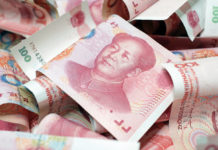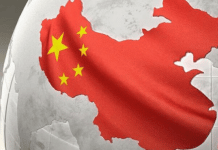Multinationals are ill-equipped to handle rapid rise in RMB
Almost two-thirds (62%) of companies in Asia-Pacific, Europe and the U.S. with exposure to China’s renminbi expect transaction volumes to more than double in...
China and the Middle East: More Than Oil
By Abbās Varij Kāzemi & Xiangming Chen
China has spread its ties to the Middle East in ways that go beyond oil. Below, Abbās Varij...
China Looks West: What Is at Stake in Beijing’s “New Silk Road” Project
By Flynt Leverett, Hillary Mann Leverett and Wu Bingbing
Not even two years into what will almost certainly be a ten-year tenure as China’s president,...
People that Live in Glass Houses Should not “Stow Thrones”
By Ian Brooks, Chairman, Mutual Trust
This version of a familiar saying sums up the present situation for many around the world. In this article,...
Foreign Direct Investment: Can China Teach the World a Lesson?
By Saul Estrin
Professor Saul Estrin examines China's growth as a global leader, and its growing global reach resulting from Foreign Direct Investment. As well...
How Finance is Shaping the Economies of China, Japan, and Korea
By Yung Chul Park, Hugh Patrick and Larry Meissner
In what ways, and to what degree, has the financial system mattered, and what roles has...
What the End of Cheap China Means for the Rest of the World
By Shaun Rein
As a new superpower, China will likely provide a helping hand whenever possible by taking a greater role in international organizations like...
A Brand Culture Approach to Chinese Branding in the Global Marketplace
By Wu Zhiyan, Janet Borgerson & Jonathan Schroeder
Global brand literacy is expanding rapidly, as is the appeal of brand identity, for a growing number of brand conscious Chinese consumers. Below, Wu Zhiyan, Janet Borgerson and Jonathan Schroeder examine how Chinese branding efforts express significant aspects of Chinese brand culture, and explore the possibilities and processes of constructing global Chinese brands.
Our research on Chinese brand culture investigates the processes and possibilities of developing global brands via a brand culture approach. Often, studies in international marketing and consumer research overlook the ways in which brand development adapts to market conditions and, importantly, contributes to public discourse. Although contexts and situations may be acknowledged to influence, if not determine, brand meanings, the co creative power of multiple brand actors is often overlooked.
In contrast, a brand culture approach directs our attention to shifts and changes that occur through repeated interactions between various actors across time and space. In this way, a cultural analysis of brand development draws attention to emerging new knowledge around the co creation and circulation of brands and cultures, highlighting gaps in previous approaches. Culture, which includes aspects of particular histories and moments of creative innovation, can be perceived as a resource upon which branding processes and practices can draw. Yet, there are many ways in which branding processes and practices – and brands themselves – go beyond this subsidiary role, and indeed, co create culture.
The Chinese Miracle: A Modern Day Industrial Revolution
By Loretta Napoleoni
In recent years, the debate regarding the Chinese economic miracle has been very much alive. Overall, criticism has outweighed praise, confirming how...
How Finance is Shaping the Economies of China, Japan, and Korea
By Yung Chul Park, Hugh Patrick, and Larry Meissner
In what ways, and to what degree, has the financial system mattered, and what roles has...























































